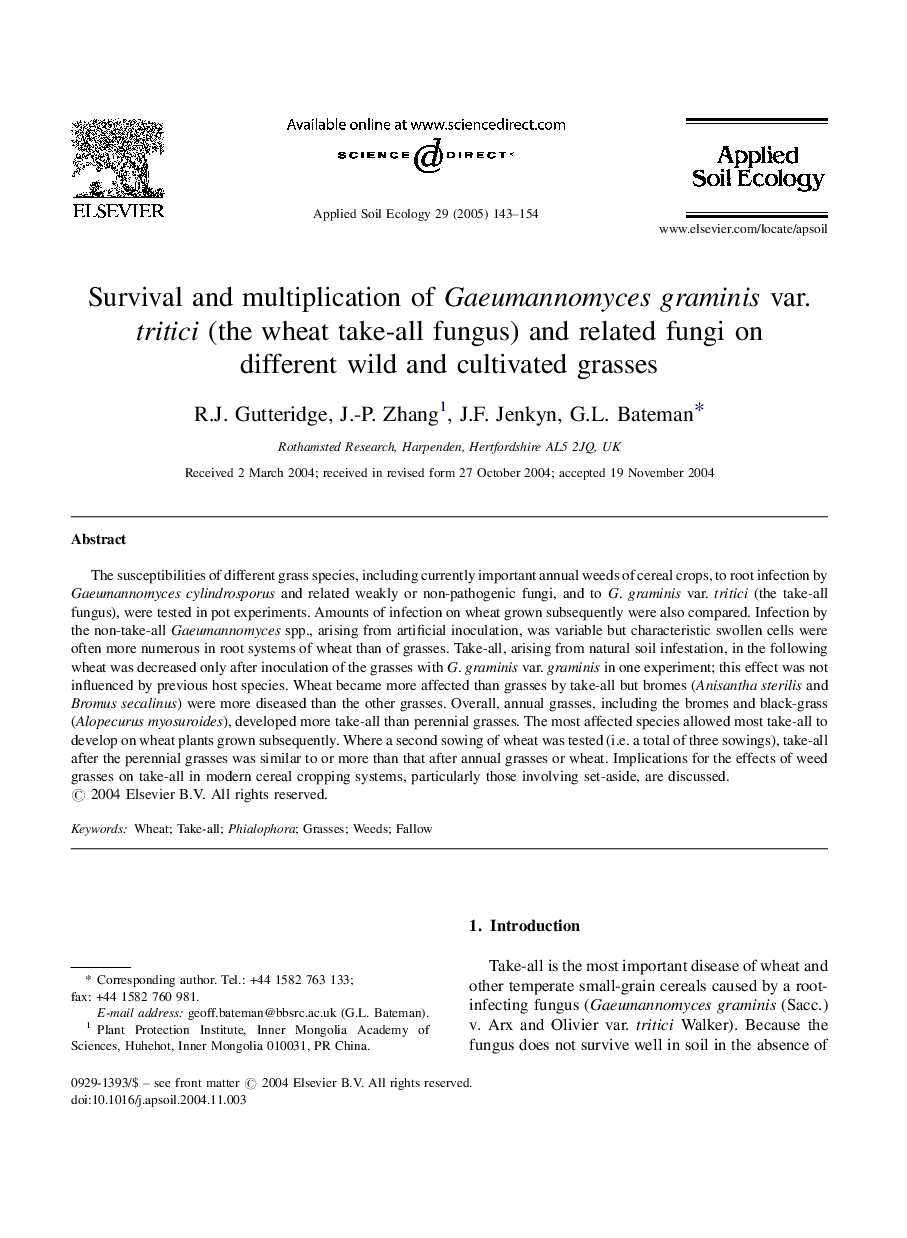| Article ID | Journal | Published Year | Pages | File Type |
|---|---|---|---|---|
| 9445215 | Applied Soil Ecology | 2005 | 12 Pages |
Abstract
The susceptibilities of different grass species, including currently important annual weeds of cereal crops, to root infection by Gaeumannomyces cylindrosporus and related weakly or non-pathogenic fungi, and to G. graminis var. tritici (the take-all fungus), were tested in pot experiments. Amounts of infection on wheat grown subsequently were also compared. Infection by the non-take-all Gaeumannomyces spp., arising from artificial inoculation, was variable but characteristic swollen cells were often more numerous in root systems of wheat than of grasses. Take-all, arising from natural soil infestation, in the following wheat was decreased only after inoculation of the grasses with G. graminis var. graminis in one experiment; this effect was not influenced by previous host species. Wheat became more affected than grasses by take-all but bromes (Anisantha sterilis and Bromus secalinus) were more diseased than the other grasses. Overall, annual grasses, including the bromes and black-grass (Alopecurus myosuroides), developed more take-all than perennial grasses. The most affected species allowed most take-all to develop on wheat plants grown subsequently. Where a second sowing of wheat was tested (i.e. a total of three sowings), take-all after the perennial grasses was similar to or more than that after annual grasses or wheat. Implications for the effects of weed grasses on take-all in modern cereal cropping systems, particularly those involving set-aside, are discussed.
Related Topics
Life Sciences
Agricultural and Biological Sciences
Ecology, Evolution, Behavior and Systematics
Authors
R.J. Gutteridge, J.-P. Zhang, J.F. Jenkyn, G.L. Bateman,
